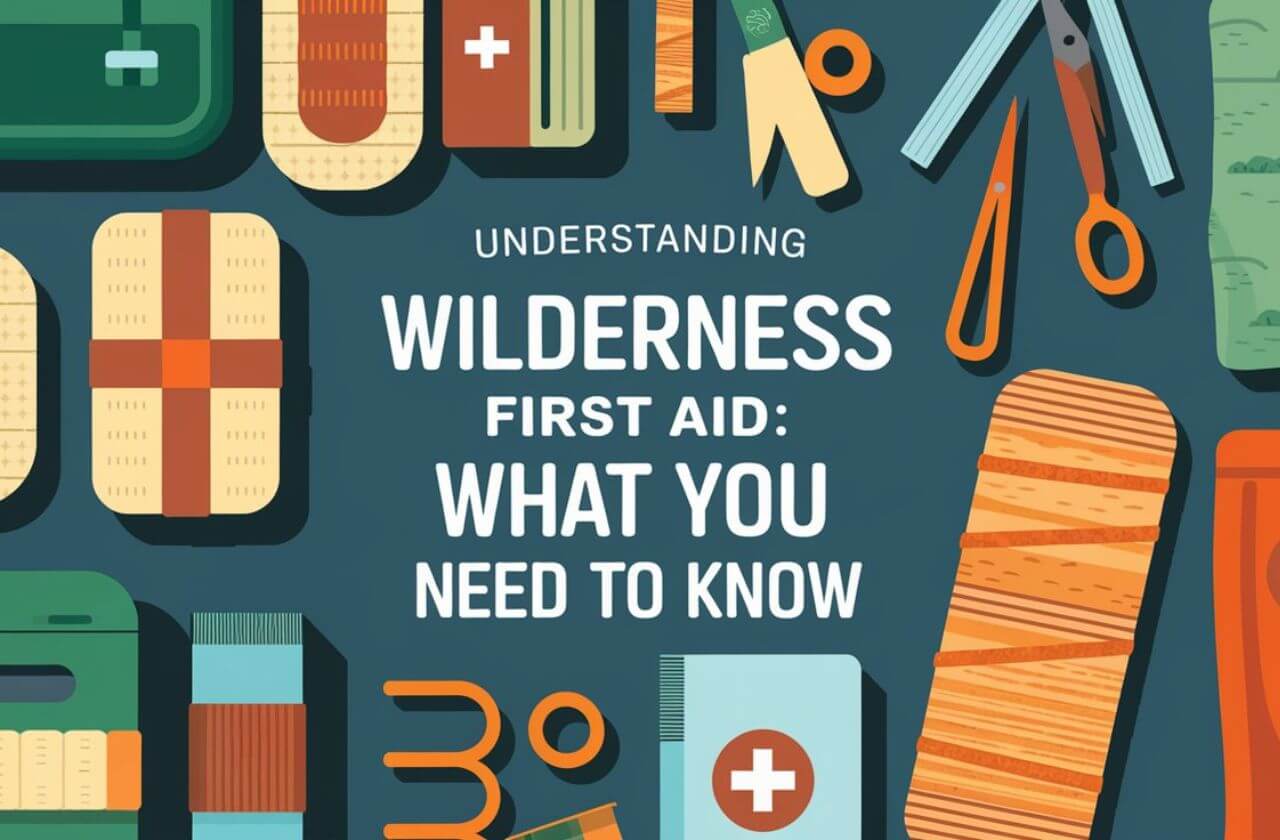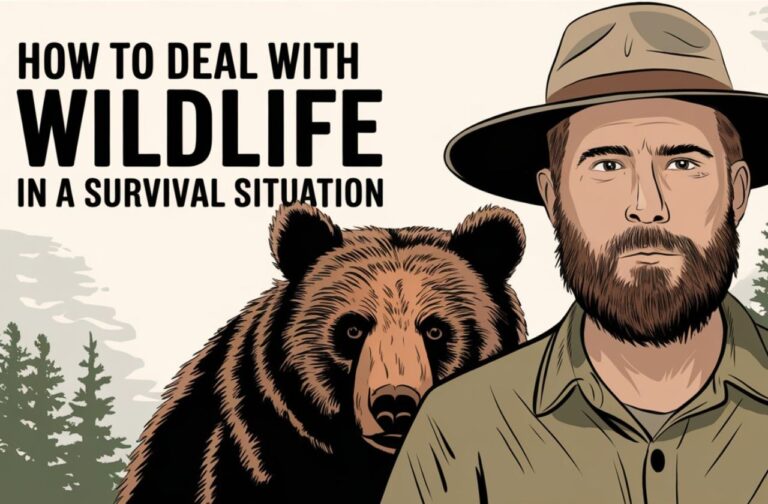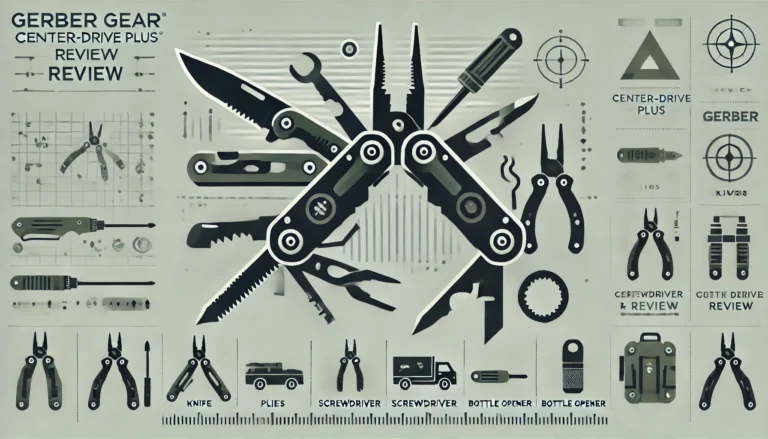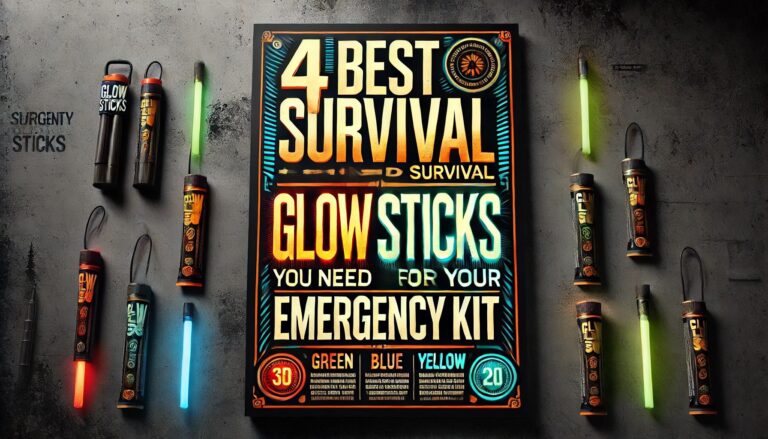Understanding Wilderness First Aid: What You Need to Know
When you head into the wild, you are embracing adventure, but you also need to be ready for the unexpected. Understanding wilderness first aid equips you with the skills to handle emergencies far from help, turning potential disasters into manageable situations.
From treating cuts and scrapes to recognizing the early signs of hypothermia, knowing what to do can keep you and your companions safe. So, what essential skills should you master before your next trip? Let’s explore the critical aspects of wilderness first aid that every outdoor enthusiast should know.
Key Takeaways
- Wilderness first aid skills are essential for effectively managing emergencies in unpredictable outdoor environments.
- Common outdoor injuries include cuts, scrapes, sprains, and heat-related illnesses, requiring specific treatment methods.
- The R.I.C.E. method (Rest, Ice, Compression, Elevation) is effective for treating sprains and strains.
- A well-maintained wilderness first aid kit should include bandages, antiseptics, and emergency items tailored to the activities planned.
- Regular training and practice enhance confidence and preparedness for responding to medical emergencies in the wild.
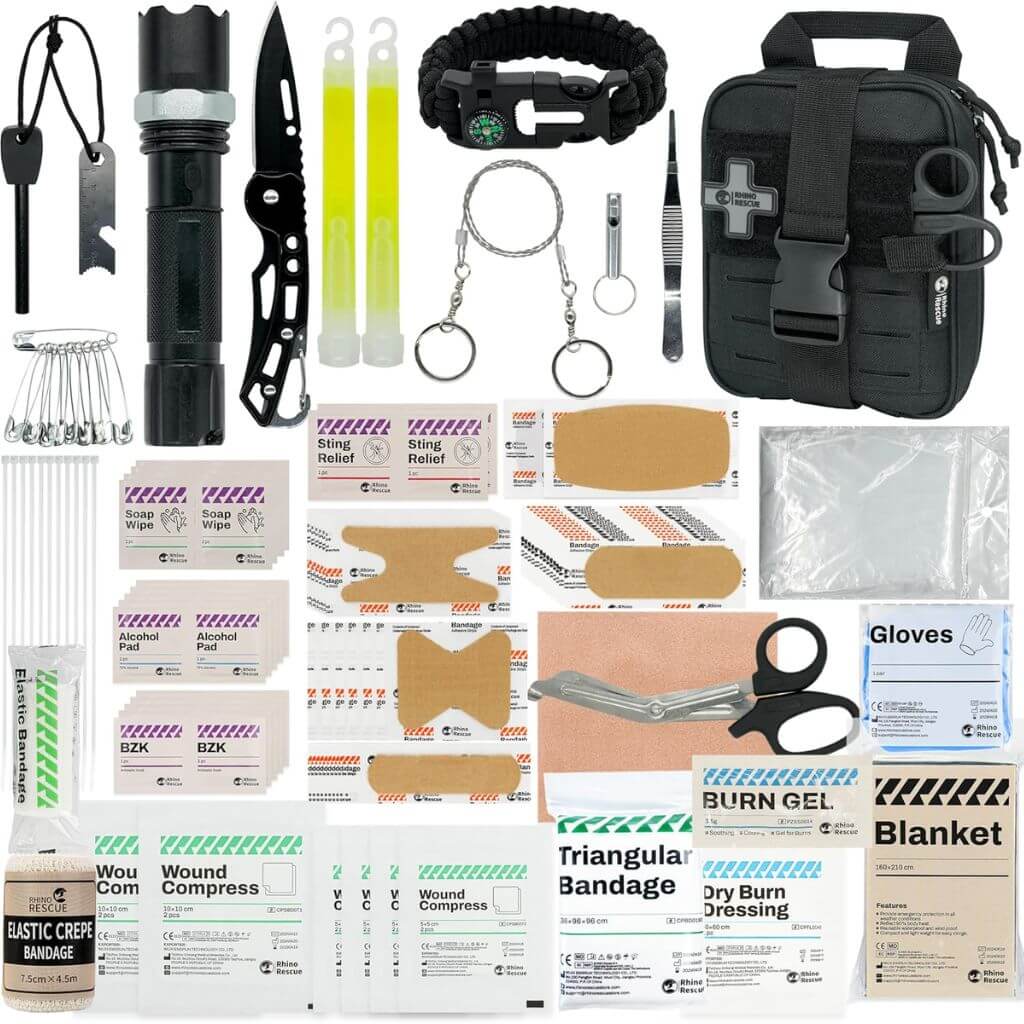
RHINO RESCUE Small First Aid Kit
Survival Tools, Emergency Care Bag for Car, Camping, Backpacking, Hiking, Hunting
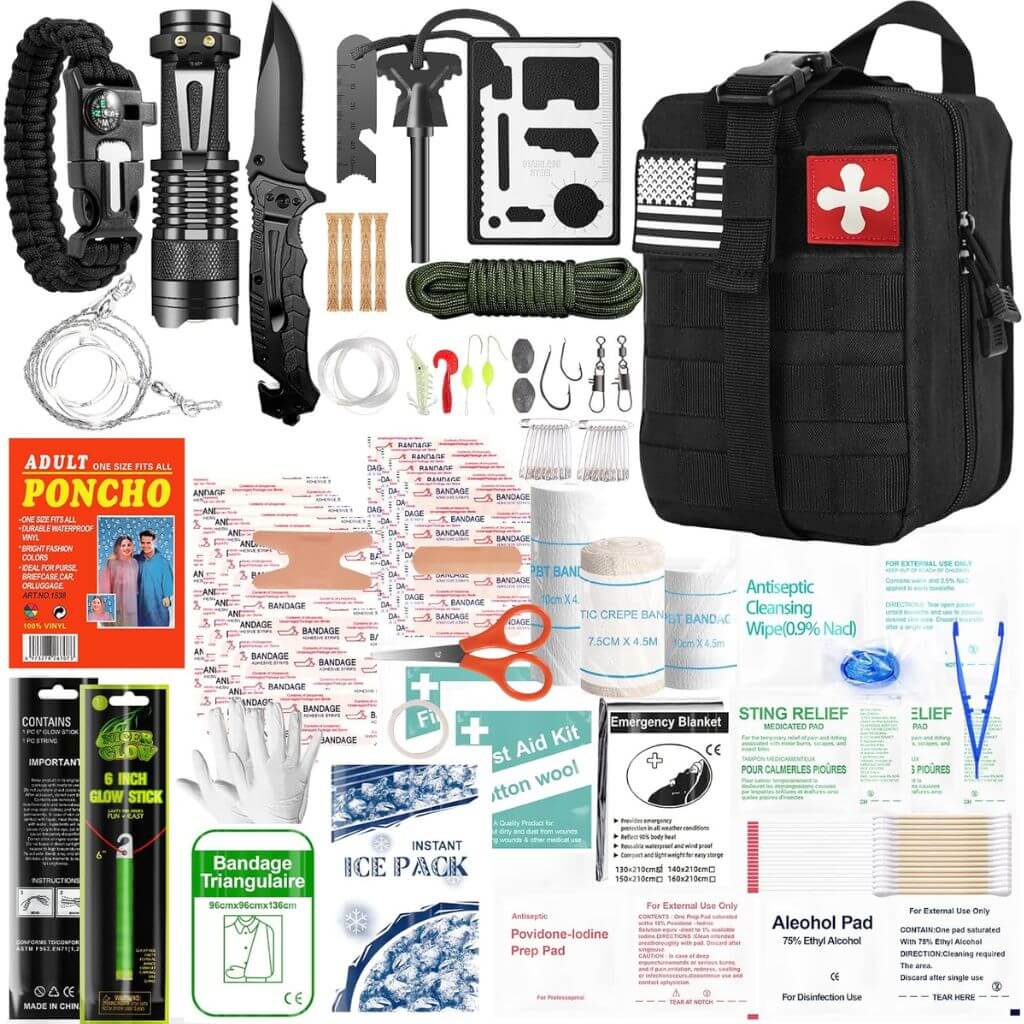
First Aid Kit IFAK with Molle System
Essential Camping Gear, Emergency Medical Supplies for Car, Fishing, Hunting, Hiking.
Importance of Wilderness First Aid
When you’re out in the wild, having wilderness first aid skills can be your lifeline. Envision this: you’re hiking up a rugged trail, the sun setting behind the mountains, when a fellow adventurer slips and twists an ankle. In that moment, your knowledge of wilderness safety transforms panic into action. You assess the injury, provide immediate care, and get them back on their feet.
Wilderness first aid isn’t just about fixing injuries; it’s about empowering you to respond effectively in emergencies. Nature can be unpredictable, and knowing how to handle situations like bites, burns, or allergic reactions can mean the difference between a memorable adventure and a potential disaster.
Don’t be a passive observer in a wilderness emergency; upskill yourself so you can take action! With wilderness first aid training, you’ll gain the confidence to act decisively, ensuring not only your safety but also that of your companions. It’s about fostering a spirit of adventure while embracing the responsibility that comes with it. Equip yourself with these critical skills, and you’ll be ready to face the wild, turning challenges into triumphs and experiences into lasting memories.
Essential First Aid Skills
Mastering wilderness first aid means honing a set of practical abilities that can save lives. It’s important to start with wound care, as injuries can happen unexpectedly. Knowing how to clean and dress a wound will help prevent infection and promote healing, keeping your adventure on track. Remember, you’re not just patching up; you’re ensuring the safety of yourself and others.
Next on your agenda is emergency response. This involves evaluating the situation and making quick, informed decisions. Whether it’s performing CPR or managing shock, your ability to respond effectively can make a world of difference. Familiarize yourself with the signs of serious conditions; this knowledge will empower you to act swiftly and confidently.
Practice makes perfect! Gain hands-on experience through workshops or simulations, and don’t hesitate to enroll in a wilderness first aid course.
The more you train, the more instinctual your skills will become, allowing you to embrace the wild with a sense of liberation, knowing you’re prepared for whatever comes your way. Adventure awaits, and with these essential skills, you’re ready to face it head-on!
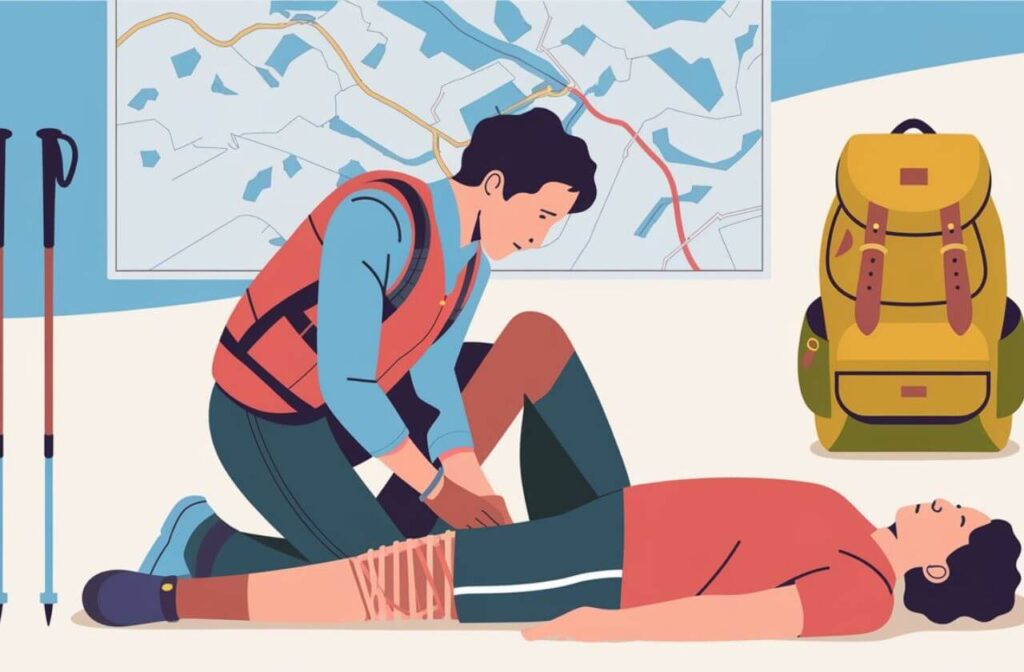
Common Outdoor Injuries
Out in the wild, adventure can sometimes lead to unexpected bumps and bruises. Cuts and scrapes from rough terrain or sprains and strains from that last big leap can put a damper on your trip. Knowing how to recognize and treat these common outdoor injuries keeps your journey safe and enjoyable!
Cuts and Scrapes
Cuts and scrapes are some of the most common injuries you might encounter while exploring the great outdoors. Whether you’re trekking rocky trails or setting up camp, these minor wounds can happen in the blink of an eye. Knowing how to manage them is essential for your adventure.
Here’s a quick guide to effective wound care and infection prevention:
| Step | Action | Purpose |
|---|---|---|
| Clean the wound | Rinse with fresh water | Removes dirt and debris |
| Apply antiseptic | Use an antiseptic wipe or spray | Reduces bacteria |
| Cover with a bandage | Use a sterile bandage | Protects from further injury |
| Monitor regularly | Check for signs of infection | Ensures healing and safety |
Always carry a basic first aid kit, including antiseptic wipes and bandages. If you notice increased redness, swelling, or pus, it might be time to seek more advanced care. Remember, treating cuts and scrapes promptly not only keeps you comfortable but also lets you focus on the excitement of your wilderness adventure!
Sprains and Strains
Adventure often leads to unexpected twists and turns, and sprains and strains are common reminders of nature’s unpredictability. As you wander through rugged trails, it’s important to be prepared for these injuries so they don’t disrupt your journey. Here’s how to handle sprains and strains effectively:
- Wear supportive footwear: Sturdy shoes can prevent ankle injuries.
- Warm-up and stretch: A few minutes of stretching can make a significant difference.
- Know your limits: Listen to your body; don’t exceed your capabilities.
- Stay aware of your surroundings: Be mindful of uneven terrain and obstacles.
If you do find yourself in a situation with a sprain or strain, proper treatment is essential. Use the R.I.C.E. method: Rest the injured area, Ice it or cool it to reduce swelling, Compress with a bandage, and Elevate to decrease blood flow. This approach aids recovery and helps prevent injuries from worsening.
With the right knowledge and tools, you can continue your adventure, liberated and ready to embrace whatever nature throws your way!
Managing Allergic Reactions
A sudden allergic reaction can turn an exciting outdoor experience into a frantic situation. When venturing into the wild, awareness of wilderness allergens—like certain plants, insect stings, or foods—is crucial for your safety. Start with allergic reaction prevention; always check your surroundings, read labels on food, and know your allergy triggers.
If someone experiences an allergic reaction, especially if it escalates to anaphylaxis, swift action is imperative. EpiPen training is necessary—make sure you and your companions know how to use it correctly. The moment you spot signs of anaphylaxis, such as swelling, difficulty breathing, or rapid pulse, don’t hesitate. Administer the EpiPen without delay.
After using an EpiPen, seek medical help immediately, even if symptoms seem to improve. Anaphylaxis can recur, so it’s crucial to stay vigilant. Trust your instincts; if something feels off, act fast.
Equip yourself with knowledge and preparation, and you’ll navigate the wild with confidence, knowing you’re ready for anything. Embrace the adventure while keeping safety in mind, and relish the freedom that comes with being prepared!
Treatment for Cuts and Scrapes
In the wild, minor injuries like cuts and scrapes are almost unavoidable, but knowing how to treat them can keep your spirit of adventure alive. Proper wound care is necessary to make sure these minor injuries don’t turn into major setbacks. Here’s a practical guide to help you navigate treatment and focus on your next thrilling escapade.
- Clean the wound: Rinse it gently with fresh water to remove dirt and debris. Avoid using alcohol, as it can irritate the skin.
- Apply antiseptic: Use an antiseptic wipe or solution to help prevent infection. This is essential for infection prevention.
- Cover it up: Use a sterile bandage or dressing to shield the wound from further injury and keep it clean.
- Monitor for signs of infection: Keep an eye on the area for increased redness, swelling, or pus, which could indicate infection.

Handling Sprains and Strains
When you’re in the wilderness, a sprain or strain can swiftly transform your expedition into a test. Understanding how to identify the symptoms and employing the R.I.C.E. method can significantly impact your recovery. Additionally, being mindful of when it’s necessary to seek expert assistance to maintain the momentum of your journey.
Recognizing Sprain Symptoms
Exploring the great outdoors can lead to unexpected twists and turns, quite literally, and recognizing the symptoms of a sprain is essential for a quick response. When you’re out adventuring, knowing the signs of a sprain helps you act fast, ensuring proper first aid and injury management. Here’s what to look for:
- Pain: You’ll feel immediate discomfort at the site of the injury.
- Swelling: Look for noticeable swelling around the affected joint.
- Bruising: Discoloration may appear, indicating bleeding beneath the skin.
- Limited Range of Motion: If you can’t move the joint without pain, it’s a red flag.
R.I.C.E. Method Explained
Sprains and strains can disrupt your outdoor escapades, but the R.I.C.E. method can help you manage these injuries effectively. R.I.C.E. stands for Rest, Ice, Compression, and Elevate.
First, give your injured area a break—resist the urge to push through the pain. Next, apply ice wrapped in a cloth for about 20 minutes every hour. An alternative to ice is to moisten a cloth such as a shemagh, and wrap the area. The evaporation of the moisture will cool the area. This helps reduce swelling and numbs the pain.
After icing, use a compression bandage to wrap the injury snugly but not too tight; you want to avoid cutting off circulation. Uplift the injured limb above heart level to minimize swelling and promote healing.
Employing the R.I.C.E. method not only offers effective treatment for sprains and strains, but it also plays an essential role in injury prevention during outdoor emergencies. Understanding how to care for these injuries can keep you moving forward on your wilderness adventures.
When to Seek Help
Knowing how to manage minor injuries like sprains and strains is important, but sometimes the situation calls for more than just first aid. If you find yourself in the wilderness and the injury seems severe, don’t hesitate to seek help. Quick intervention can prevent further damage and guarantee a smooth recovery.
Consider these signs that indicate it’s time to reach out for assistance:
- Severe pain that doesn’t improve with rest
- Swelling or bruising that worsens over time
- Inability to move the affected area or bear weight
- Signs of infection, such as redness or warmth
In these scenarios, wilderness communication becomes essential. Use your emergency response skills to alert your group or call for help. Understand the procedures for wilderness evacuation if the situation demands it.
Whether it’s a trusted friend or a nearby ranger, make sure you have a clear plan to get the assistance you need. Remember, it’s not just about being adventurous; it’s also about being smart and safe. Prioritize your well-being, and you’ll be ready for your next great escapade!
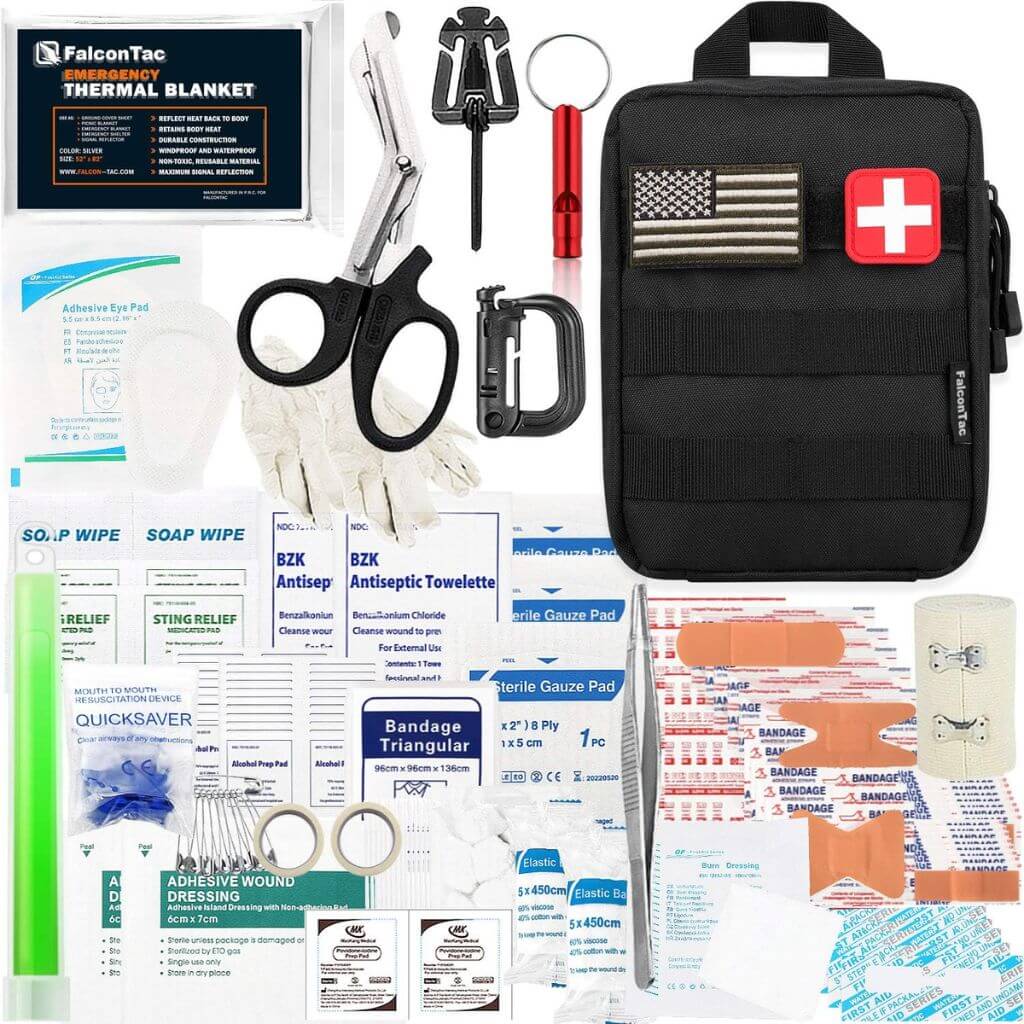
FalconTac 200 Pieces First Aid Kit
IFAK Survival Kit Molle System Compatible Pouch, Emergency Kit For Outdoor Adventures, Camping, Hiking

KeepGoing Travel First Aid Kit
130 Pc. – First Aid Kit for Car, Home, Hiking, Camping and Outdoor Emergencies
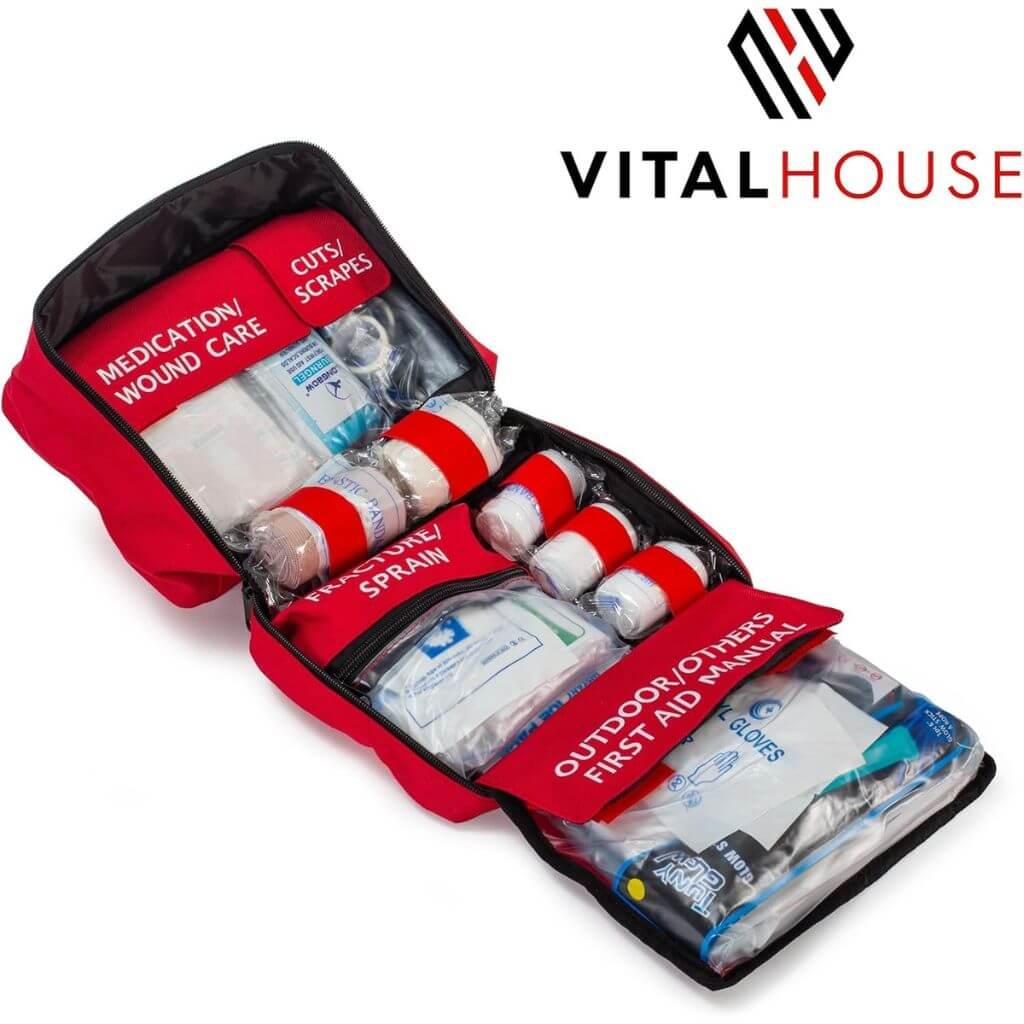
Vital House 326 Piece First Aid Kit
Professional Waterproof Trauma Medical Kit for Emergency, Ideal for Home, Office, Car, Travel, Outdoor, Camping, Hiking, Fishing.
Dealing With Hypothermia
When temperatures drop and wet conditions set in, anyone can find themselves at risk of hypothermia. To stay safe in the wild, you need to be prepared with effective prevention strategies and quick emergency responses.
| Risk Factors | Treatment Options |
|---|---|
| Prolonged exposure to cold | Warm, dry clothing |
| Wet clothing | Hot, non-alcoholic drinks |
| Low body fat | Body heat transfer (skin-to-skin) |
Start by recognizing risk factors like wet clothing or prolonged exposure to cold. If you or someone else shows signs of hypothermia—such as shivering, confusion, or fatigue—act quickly. Remove any wet clothing and replace it with dry, insulated layers. Offer warm, non-alcoholic drinks to help raise core temperature.
For severe cases, your emergency response should include body heat transfer techniques. If possible, share body heat by cuddling up with the affected person. Remember, hypothermia can escalate quickly, so don’t hesitate to seek medical help if symptoms worsen. Stay aware, stay warm, and continue your wilderness adventures with confidence!
Recognizing Heat-Related Illnesses
Recognizing the signs of heat-related illnesses is essential for staying safe during your outdoor adventures. As you embrace the great outdoors, keep an eye out for early warning signs that could signal trouble. Ignoring these signs can turn your liberation into a dangerous situation.
Look for these symptoms:
- Excessive sweating or dry skin
- Dizziness or lightheadedness
- Nausea or vomiting
- Rapid heartbeat
To prevent heat-related illnesses, adopt effective prevention strategies. Stay hydrated, wear light clothing, and take regular breaks in the shade. If you spot any early warning signs, act quickly by moving the affected person to a cooler environment and providing water.
For treatment options, cool the person down with wet cloths or ice packs, especially on pulse points like the neck and wrists. If symptoms worsen, or if they don’t improve within 30 minutes, don’t hesitate to initiate an emergency response.
Your ability to recognize and respond to these conditions is key to ensuring that your adventures remain thrilling, not threatening. Embrace the wilderness, but always keep safety in mind!
Safety Tips for Remote Areas
Venturing into remote areas can be an exhilarating experience, but your safety should always be a top priority. Before you set off on your adventure, make certain you’ve got reliable remote communication tools. A satellite phone or a personal locator beacon can be lifesavers if you find yourself in a sticky situation. Let someone know your itinerary and expected return time to make sure someone’s looking out for you.
Next, hone your navigation skills. Mastering map reading and using a compass can make all the difference when your GPS signal falters. Practice these skills before you head out, so you feel confident traversing the wilderness.
Additionally, pack extra supplies, including food, water, and a first-aid kit, to prepare for the unexpected. A well-thought-out plan keeps your spirit of adventure alive while minimizing risks.
Embrace the freedom of wilderness exploration, but do so with mindfulness. Trust your instincts, stay aware of your surroundings, and keep a cool head. By prioritizing safety, you can enjoy the thrill of remote areas while making sure that you return home ready for your next adventure.
Recommended First Aid Kits
When you’re trekking through the wilderness, having the right first aid kit can make all the difference. It’s important to know which essential components to include, along with specialized supplies tailored for outdoor adventures.
Plus, keeping your kit well-maintained and regularly checked will help you stay prepared for whatever nature throws your way!
Essential Kit Components
A well-equipped first aid kit can be your lifeline in the wilderness, and having the right components is essential for any outdoor adventure. You never know when you might encounter a scrape, sprain, or more serious injury. Proper kit preparation ensures you’re prepared for anything nature throws your way.
Here are some first aid essentials you should include in your kit:
- Adhesive bandages for cuts and scrapes
- Antiseptic wipes to clean wounds and prevent infection
- Sterile gauze pads and tape for larger injuries
- Elastic bandage wrap for sprains and strains
Make sure to customize your kit to your specific needs and the environment you’ll be exploring.
For example, if you’re heading into the backcountry, consider adding extra supplies like a triangular bandage or a space blanket.
Specialized Wilderness Supplies
Choosing the right first aid kit can make all the difference in your wilderness excursions. You want gear that’s not just packed with random items, but tailored to meet the specific challenges of the great outdoors. A well-equipped kit will include essential medical supplies to address injuries and illnesses that can occur far from civilization.
When selecting your kit, consider the following types to match your needs:
| Type of Kit | Description |
|---|---|
| Day Hike Kit | Lightweight, compact kit for minor injuries and scrapes |
| Multi-Day Backpacking Kit | Extensive supplies for extended trips and emergencies |
| Family Adventure Kit | Larger kit designed to handle multiple people and varied needs |
No matter which kit you choose, make sure it has the essential medical supplies like bandages, antiseptic wipes, and pain relief. Having the right wilderness gear not only prepares you for the unexpected but also empowers you to embrace your adventures with confidence. So gear up, stay safe, and let the wild call you!
Maintenance and Inspection
Your wilderness first aid kit is only as good as its condition, so regular maintenance and inspection are crucial to staying prepared for any wilderness mishap. You don’t want to be caught in the wild with expired supplies or missing gear. To validate your kit is ready for action, make these practices part of your adventure prep routine.
- Perform safety checks: Regularly inspect for any hazards or damages in your kit.
- Conduct equipment inspections: Look over bandages, antiseptics, and tools to guarantee they’re in good condition.
- Manage inventory control: Keep a checklist of contents and replace used or expired items.
- Store it right: Verify your kit is dry, stored in a cool place, and packed securely for easy access.
Frequently Asked Questions
What Certifications Are Available for Wilderness First Aid Training?
You’ve got exciting certification options for wilderness first aid, like Wilderness First Responder and Wilderness First Aid courses. Most credentials are valid for two to three years, ensuring you stay prepared for your adventurous escapades.
How Often Should I Refresh My Wilderness First Aid Skills?
You should refresh your wilderness first aid skills every two to three years. Regular practice keeps you sharp, and online options offer convenience to fit your adventurous lifestyle. Stay prepared for any wilderness challenge that comes your way!
Can I Use Regular First Aid Supplies in Wilderness Settings?
Sure, you can use regular first aid supplies in wilderness settings, but improvising supplies is often necessary. Embrace unique challenges and adapt your resources creatively for the wild—it’s all part of the adventure!
What Should I Do if I Encounter a Wild Animal?
When you encounter a wild animal, stay calm. Observe its behavior and avoid sudden movements. Use safety precautions like backing away slowly, making noise to prevent surprise encounters, and always prioritize prevention to guarantee your safety.
Are There Specific Wilderness First Aid Courses for Children?
Yes, there are child-specific training and youth wilderness courses designed to empower kids with essential skills. These adventures not only teach safety but also spark confidence and a love for the great outdoors.
Conclusion
As you head into the wild, remember that understanding wilderness first aid is your ticket to a safe adventure. Equip yourself with essential skills and a well-stocked first aid kit, so you’re ready for anything nature throws your way. Whether treating cuts, managing allergic reactions, or recognizing the signs of hypothermia, your preparedness can make all the difference. Explore the thrill of the outdoors, but don’t forget: safety first means a successful adventure!

